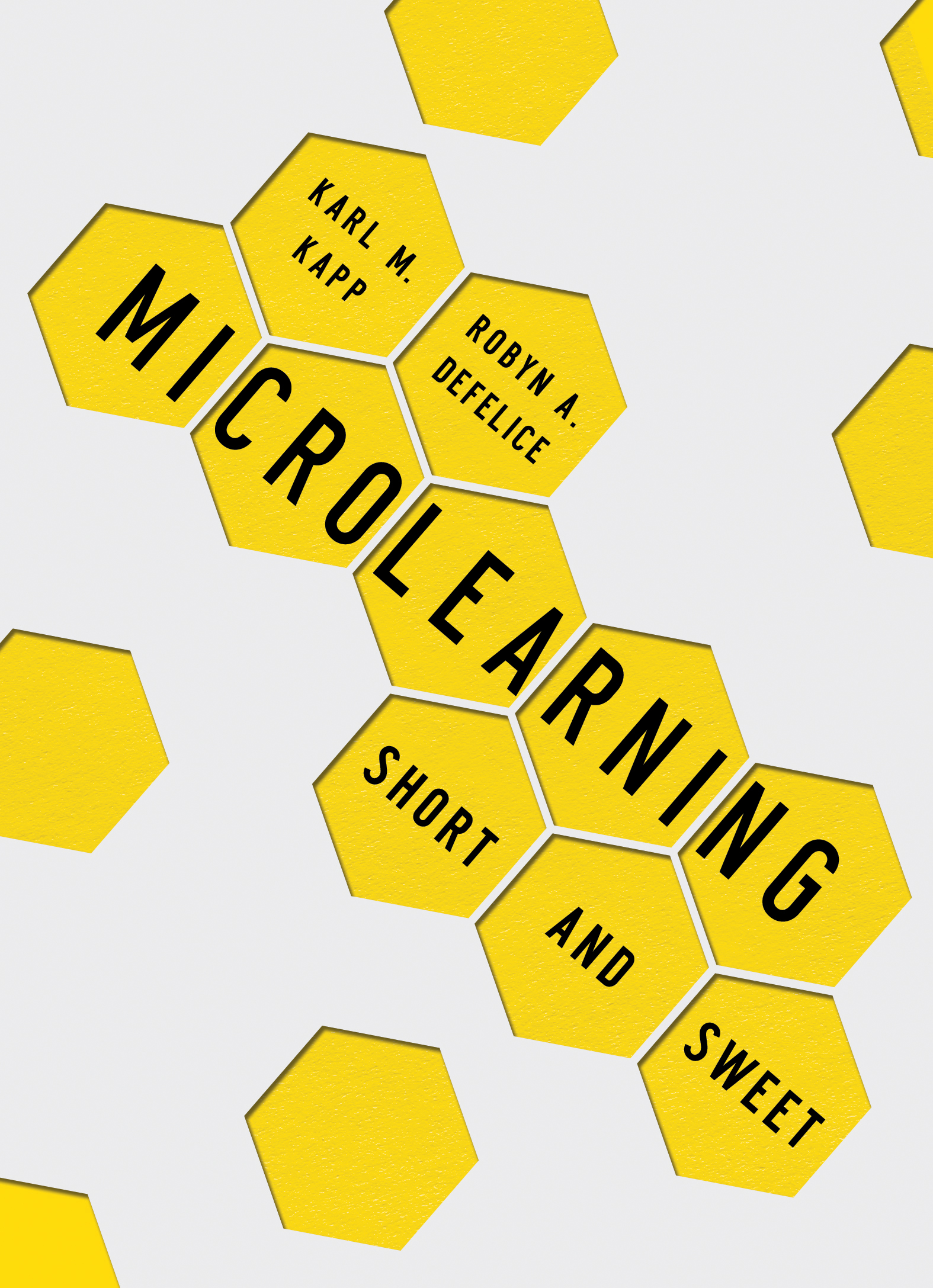There has been much discussion about microlearning in the last two years, although the term itself has been around for decades. As an undefined buzzword, there has been little if any agreement about the details of what microlearning is and how it should work. So many concepts and claims have been made about microlearning that any real usefulness sometimes seems to be lost in the confusion and disagreement.
In the introduction to Microlearning: Short and Sweet, Karl M. Kapp and Robyn A. Defelice set a goal for the book: “… we decided a book was needed to demystify what microlearning really is, to offer all the learning theories and research that supports it, and to present an actionable road map for planning, implementing, designing, and evaluating it.” This seems pretty ambitious but they have succeeded, and in this review I give a “short and sweet” overview of the result.

Microlearning: Short and Sweet
By Karl M. Kapp and Robyn A. Defelice
To begin at the beginning
All readers should start with Chapter 1, in which the authors tell the reader what (in their view) microlearning is. They do this with examples of microlearning, definitions, and characterization. Their intent is to “operationalize a standard definition” of microlearning. Given the broad range of concepts of and claims about microlearning found in the literature (and in sales materials), making sure that everyone who reads the book is on the same page is a great goal.
After extensive exploration of examples, concepts about content, length, style, scope and purpose, and a thorough analysis of the ways the term has been used, the authors give their working definition of the term microlearning. It probably won't satisfy everyone, but it is a solid summary of what most designers have been creating: "Microlearning is an instructional unit that provides a short engagement in an activity intentionally designed to elicit a specific outcome from the participant."
Major takeaways
The definition is short and sweet, as promised. In a concise 189 pages, Kapp and Defelice proceed to show the reader how to create one of these. At the very beginning, they make four important points (among many others) that designers and managers who are contemplating adopting microlearning as a strategy should keep in mind:
- Microlearning is meant to be part of a larger learning system.
- Microlearning is the smallest unit of instruction possible, mapped back to higher outcomes.
- Microlearning can take any of a number of forms; it is not limited to one medium or another.
- “Short engagement” means a participant will be engaged in an activity for about 5 - 15 minutes.
In addition, I appreciated the authors’ statement in the Foreword that, “the idea that microlearning is a quick and easy way to jazz up a stale learning program is a bit of a myth. Microlearning can actually take just as long, if not more time, to develop and implement. … What we are saying is that microlearning needs as much attention from an instructional design standpoint as any other form of training.”
Organization and content
Microlearning: Short and Sweet succeeds because it is well-organized and thoroughly documented. In eight chapters, it flows through:
- An exploration of the operational definition of microlearning
- Matching microlearning to learning theory across domains (cognitive, affective, psychomotor) and the limits of microlearning's application within each domain
- Microlearning use cases and types, and the critical design decision: determining the best use case and type
- Why microlearning works, when to use it, and how to maximize outcomes
- Creating, designing, implementing, and evaluating microlearning, using case studies to help elaborate the key concepts
The authors assume throughout that the reader has a specific potential use of microlearning in mind. Such a purpose will make it much simpler to use this book effectively, otherwise microlearning becomes a solution in search of a problem. Microlearning is not a panacea; to treat it as such is to make it one more idea that will be tried and discarded.
The authors give the reader some theory to support instructional design, but only just enough to guide a reader—particularly a reader who has already been exposed to foundational instructional design thinkers (for example, Bloom, Krathwol, Vygotsky, and Schank, among others) and the key parts of their contributions to theory and practice. I am a little concerned that readers who have not had that exposure or are completely new to instructional design may not get enough of the critical context. They probably won’t find the theory parts difficult, but I predict they may find that a lot of access to Wikipedia will be needed to fill in gaps in their knowledge.
That concern notwithstanding, the authors provide the reader with plenty of help. In the first four chapters they include helpful charts and diagrams, as well as worksheets, to pretty much guarantee that even a first attempt by a new instructional designer will succeed. In the last four chapters and in the Conclusion section of Microlearning: Short and Sweet, readers will find extensive guidance and examples that will support creating microlearning products. The discussion includes microlearning tools ranging from podcasts to videos, and from gamification to one of the latest developments, short sims.
Conclusion
I have no problem recommending Microlearning: Short and Sweet to any L&D organization and to individual eLearning designers and developers. It has been a long time since I have seen a book on learning design and practice as well-written and effective as this one (my "time" begins with graduate school and Bob Mager's books on learning objectives in the early 1970s, and Tom Gilbert's Human Competence in 1978). Karl Kapp and Robyn Defelice have added another to the list of references that everyone in this field should have for study and use.
Bibliography
Kapp, Karl M. and Defelice, Robyn M. Microlearning: Short and Sweet. Alexandria: ATD Press. (2019)



